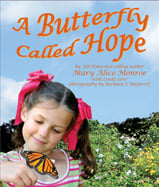Alignment to Standards for KY

| Grade | Number | Standard |
|---|---|---|
| 4 | SC-04-3.4.3 | Students will compare a variety of life cycles of plants and animals in order to classify and make inferences about an organism. |
| 4 | SC-04-3.4.3a | Plants and animals have life cycles that include the beginning of life, growth and development, reproduction and death. The details of a life cycle are different for different organisms. |
| 4 | SC-04-3.4.3b | Models of organismsê life cycles should be used to classify and make inferences about an organism. |
| 4 | SC-04-4.7.1a | patterns of evidence related to the survival and reproductive success of organisms in particular environments. |
| 4 | SC-4-I-U-1 | all living things depend on their environment and other organisms within it for their survival. Certain patterns of behavior or physical features may help an organism survive in some environments yet perish in others. |
| 4 | SC-4-UD-S-3 | Students will investigate and compare life cycles, especially reproductive characteristics (e.g., gestational periods, germination rates, number of offspring) and life expectancies of plants and animals to make inferences and/or draw conclusions about the |
| 4 | SC-4-UD-U-6 | Students will understand that all living things are produced from other living things. They grow and then eventually die. Before they die most living things create offspring, allowing their kind to continue. |
| 5 | SC-5-I-U-2 | populations interact with each other in an ecosystem form a specific community, but there may be multiple communities within the same ecosystem. |
| Primary | SC-EP-3.4.1 | Organisms have basic needs. For example, animals need air, water and food; plants need air, water, nutrients and light. Organisms can survive only in environments in which their needs can be met. |
| Primary | SC-EP-3.4.3 | Students will describe the basic structures and related functions of plants and animals that contribute to growth, reproduction and survival. |
| Primary | SC-EP-3.4.3a | Each plant or animal has observable structures that serve different functions in growth, survival and reproduction. For example, humans have distinct body structures for walking, holding, seeing and talking. These observable structures should be explored |
| Primary | SC-EP-3.4.4 | Students will describe a variety of plant and animal life cycles to understand patterns of the growth, development, reproduction and death of an organism. Plants and animals have life cycles that include the beginning of life, growth and development, repr |
| Primary | SC-P-UD-S-1 | Students will describe the basic needs of organisms and explain how these survival needs can be met only in certain environments |
| Primary | SC-P-UD-S-3 | Students will investigate adaptations that enable animals and plants to grow, reproduce and survive (e.g., movements, body coverings, method of reproduction) |
| Primary | SC-P-UD-S-4 | Students will analyze structures of plants and animals to make inferences about the types of environments for which they are suited |
| Primary | SC-P-UD-S-6 | Students will analyze and compare a variety of plant and animal life cycles in order to uncover patterns of growth, development, reproduction and death of an organism |
| Primary | SC-P-UD-U-3 | some animals are alike in the way they look and in the things they do, and others are very different from one another. |